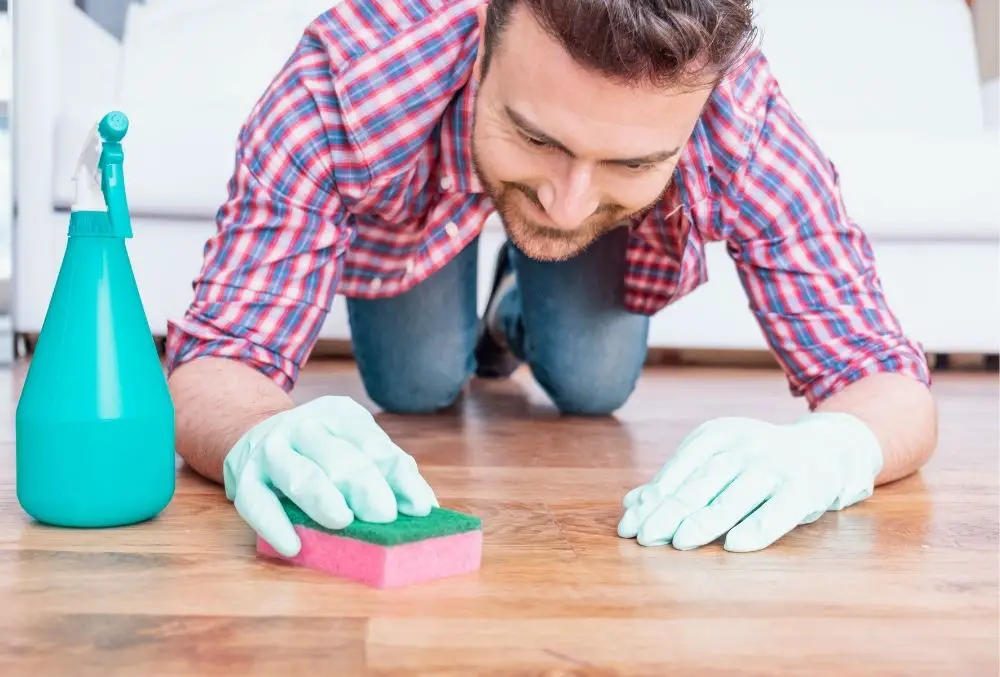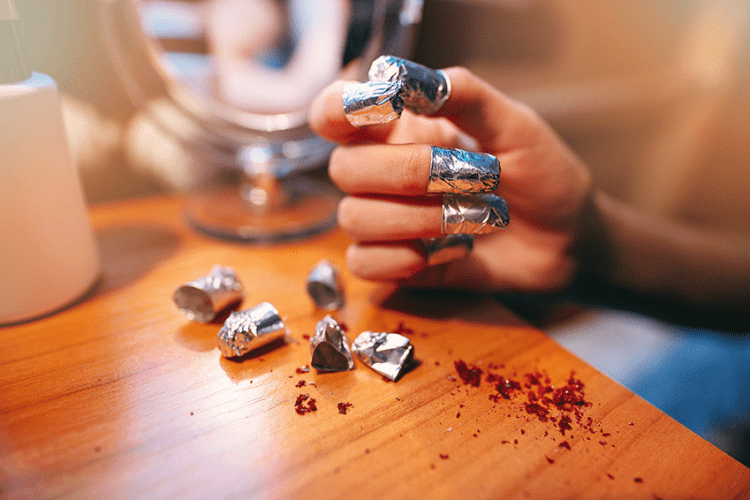Ever dropped a bottle of nail polish? The colorful catastrophe that ensues can be enough to send chills down any homeowner’s spine. Stained wood floors are no joke, but fear not! With the right tools and a bit of patience, you can banish those nail polish blemishes from your beloved hardwood and leave your floors looking their best.

Image: www.woodfloorscleaner.com
Nail polish, with its vibrant pigments and quick-drying properties, can be a tough stain to tackle. But before you reach for harsh chemicals or resort to drastic measures, take a deep breath. This article will guide you through proven techniques for removing nail polish from your wood floor, outlining the safest and most effective methods for each scenario.
The ABCs of Nail Polish Removal
Before we dive into the removal process, let’s understand why nail polish stains are so tenacious and what makes certain removal methods more effective than others.
The Science Behind the Stain
Nail polish is essentially a mixture of pigments, resins, and solvents. While the pigments determine the color, it’s the resins that give nail polish its characteristic toughness and ability to adhere to surfaces. Once the solvent evaporates, the resins harden, forming a resilient layer that can be difficult to remove.
Why Different Woods React Differently
The type of wood can also influence how readily it absorbs the nail polish. Hardwoods like oak and maple are typically denser and less porous, making them less susceptible to deep staining compared to softer woods like pine, which have a more open grain structure. Understanding your wood’s properties will help you choose the appropriate removal method.

Image: prohousekeepers.com
Your Stain Removal Arsenal: A Guide to Tools and Techniques
To wage war against nail polish stains, you’ll need the right arsenal. The specific tools and techniques you utilize will depend on the type of nail polish (acrylic, gel, or regular), the age of the stain, and the finish of your wood floor.
1. The Gentle Approach: Non-Acetone Nail Polish Remover
For fresh spills, non-acetone nail polish remover is your go-to weapon. It’s gentle enough to use on most wood finishes and can effectively dissolve fresh nail polish.
- Method: Soak a cotton ball or soft cloth in the remover and gently dab the stain. Don’t scrub, as it could damage the wood’s surface. Work from the outside in to prevent spreading the stain. Continue dabbing until the nail polish begins to lift.
- Tip: If the stain persists, try using a soft-bristled toothbrush to gently scrub the area. Be sure to test the remover on an inconspicuous area of your floor first to ensure it doesn’t damage the finish.
2. The Heavy Artillery: Acetone-Based Nail Polish Remover
For stubborn or dried-in stains, you might need to call upon the power of acetone. While more aggressive than non-acetone remover, it’s still important to use it cautiously to avoid damaging your wood floor.
- Method: Moisten a cotton ball or cloth with acetone and gently dab the area, working from the outer edges towards the center of the stain. Don’t rub or scrub vigorously. Continue until the nail polish starts to loosen.
- Caution: Acetone can strip away the finish on some wood floors. Always test a small inconspicuous area first. Avoid letting the acetone sit on the wood for extended periods.
3. The Power of Paste: Baking Soda and Water
Baking soda’s mild abrasiveness can help to lift stains from the wood’s surface. It’s particularly effective for removing regular nail polish stains.
- Method: Create a thick paste by combining baking soda with a little water. Apply the paste to the nail polish stain and let it sit for about 15 minutes. Gently rub the paste with a soft cloth, working in circular motions. Rinse the area thoroughly with water and allow to dry.
- Tip: For stubborn stains, you can add a drop of lemon juice to the paste for a bit of extra power.
4. The Pro’s Touch: Denatured Alcohol
Denatured alcohol is a solvent known for its effectiveness in breaking down resins. It can be an excellent option for removing nail polish, particularly if other methods have failed.
- Method: Dampen a cotton ball with denatured alcohol and gently dab the stain. Work from the outside inwards to prevent spreading the stain. Repeat until the nail polish is lifted. Rinse the area with water and allow it to dry completely.
- Caution: Denatured alcohol can be harsh on some wood finishes. Always test a small area first.
5. The Last Resort: Commercial Wood Cleaners
If all else fails, you can consider using a commercial wood cleaner specifically designed for removing stubborn stains. Always read the manufacturer’s instructions carefully before using any product.
- Tip: Look for cleaners that are specifically formulated for wood floors and free of harsh chemicals.
Beyond the Stain: Protecting Your Floors
Once you’ve successfully vanquished the nail polish stain, it’s crucial to take steps to protect your wood floor from future mishaps. Here are a few simple measures you can take:
1. The Power of Prevention: A Protective Layer
Applying a coat of polyurethane, wax, or sealant can create a barrier that makes your floors more resistant to stains and scratches. Review your wood floor’s finish and choose a compatible product.
2. Regular Maintenance: Keeping Your Floors Clean
Regular sweeping and mopping can help to prevent dirt and grime from building up, reducing the likelihood of stains adhering to your wood floor. Use a dust mop for daily cleaning and a damp mop for weekly treatments.
Common Mistakes to Avoid
While it’s tempting to jump into action, rushing the process can actually worsen the situation. Here are some common mistakes to avoid:
- Scrubbing Too Hard: Excessive rubbing can damage the wood’s surface, making the stain harder to remove and creating more work for you.
- Using Harsh Chemicals: Avoid using abrasive cleaners, bleach, or other strong chemicals that can strip away the finish of your wood floor.
- Leaving the Remover On for Too Long: Acetone and other solvents can damage the wood if left in contact for too long.
How To Remove Nail Polish From Wood Floor
A Few Final Words of Wisdom
Removing nail polish from wood floors can be a delicate procedure. Remember to work carefully and test any cleaning agent or solution on an inconspicuous area first. With patience and the right tools, you can restore your wood floors to their former glory!

:max_bytes(150000):strip_icc()/OrangeGloEverydayHardwoodFloorCleaner22oz-5a95a4dd04d1cf0037cbd59c.jpeg?w=740&resize=740,414&ssl=1)




